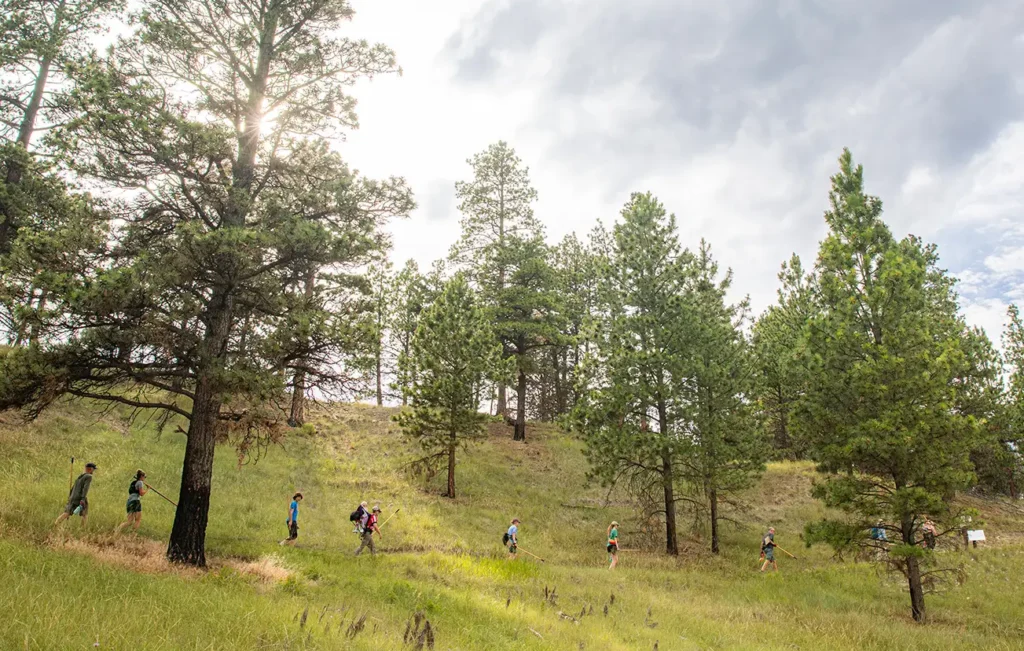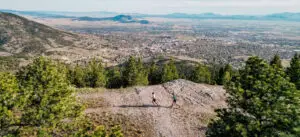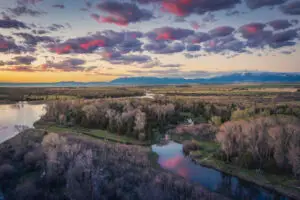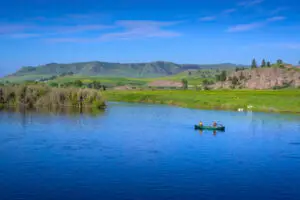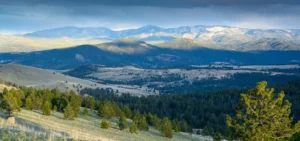Across the West, population growth, political pressures, and rising recreation conflicts are putting unprecedented strain on public lands. These trailhead confrontations, user group clashes, and land use disputes are making the headlines in many communities that rely on outdoor recreation. But Helena’s story is different. Here, Happy Trails isn’t just a slogan on a bumper sticker – it’s a community ethos three decades in the making.
Back in 1995, when Prickly Pear Land Trust and community members rallied to protect Mount Ascension, they set something bigger in motion. Land deals, volunteer sweat, and a shared vision transformed Helena’s backyard into more than 80 miles of trails, 2,000 acres of open space, and three new community parks: The Grove, Prickly Pear Park, and Tenmile Creek Park.
Happy Trails culture is thriving. Trail counters at these three parks logged a total of 51,129 visitors between May 1 and September 30 this year, a clear sign that these spaces are woven into daily life. These spaces are now our playground. Our reset button. Our gathering place. Our classroom.
At the end of last year, we asked the community through an online survey: What does “Happy Trails” mean to you? Here’s what you told us:
“It’s a lifestyle – an ethos. We need to take good care of the trails, because they help us take good care of ourselves.”
“Our local trails connect each of us through our common love of being outside. Happy Trails culture feels like everyone is a friend, whether you know them or not.”
“All users are welcome. All users are respected. All users are having a good time.”
Survey respondents repeatedly emphasized kindness, shared responsibility, and access for everyone. Many expressed gratitude for the way conservation work has shaped their daily life: “Access and conservation of the lands surrounding Helena is definitely Helena’s biggest flex,” one wrote. Another said simply, “It makes Helena the best place to live in Montana!”
The sense of shared ownership doesn’t happen by accident. It’s built through decades of trail stewardship, land conservation, and a culture of mutual respect. “The Happy Trails culture reflects gratitude that we have such a great resource we can all share,” one respondent wrote. “I think this promotes a sense of shared space which allows people to be gracious and friendly to each other on the trails.”
Our story is bigger than just recreation. It’s proof that conservation creates access and access, in turn, builds health, happiness, and community. As our community grows, keeping this culture alive starts with simple acts of respect on the trail like offering a hello, slowing down for others, keeping dogs under control, and leaving no trace.
It also takes people power. Volunteering, showing up in public processes, and lending your voice all help shape the future of our open spaces. And in times like these, when government funding is uncertain, it requires continued investment through donations, partnerships, and advocacy to expand access and care for the places we share.
Happy Trails is something we get to maintain and build together, every day, on and off the trail.
Cassie Solberg is the communication coordinator at PPLT.

